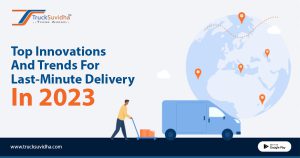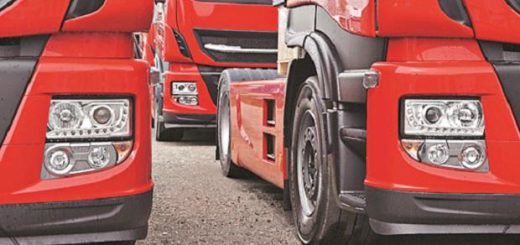Top Innovations And Trends For Last-Minute Delivery In 2023
Logistics can be challenging during the last mile of delivery, from a warehouse or distribution centre to the customer’s residence. According to experts, the last mile might account for between 25 and 50 percent of transportation costs.
In 2023, several trends will affect how deliveries are made. One of them is the expanding use of technology to increase productivity, save costs, and improve customer experiences. Businesses will also explore ways to use clean technologies to lessen their carbon footprint. They will prioritize deliveries for safety and security, particularly as the pandemic continues.
Top Innovations And Trends For Last-Minute Delivery In 2023
Here are 13 trends and innovations related to last-mile delivery that you can expect in 2023.

1. Considering a Range of Delivery Methods
Many retailers now employ a hybrid delivery strategy that combines their fleet with options for crowdsourced and third-party deliveries. Retailers now have more flexibility and control over their last-mile delivery operations because to this.
Retailers require a unique last-mile delivery technology to handle a hybrid fleet strategy. It must offer a centralised dashboard for planning routes, tracking the whereabouts of vehicles, and getting delivery updates.
Retailers may save expenses and improve customer experience by utilising a hybrid strategy. However, managing a hybrid fleet model can be difficult, and many businesses still depend on outside logistics companies.
- In- house Shipping Carriers
At the same time, businesses are always expected to keep their logistics in-house rather than rely on third-party logistics providers (3PLs). Companies are beginning to invest in their fleets and provide clients with secure local delivery services. As a consequence, shops are searching for local drivers that can give consistent outcomes.
Retailers may better manage prices and the delivery experience by managing everything internally. This strategy will increase income streams and earnings for enterprises.
- The Application of Data Analytics
Last-mile delivery trends are continuously changing, and one of the most recent is the increased usage of big data. Businesses employ data analytics to gather insights as they enhance their delivery efficiency and client experience. These insights examine client behaviour, forecast demand, and forecast future trends. As a result, they shorten delivery times and offer a more personalised shopping experience.
This idea has been completely accepted by the food delivery business, and other industries will soon follow suit. Data-driven decisions will have a significant impact on the future of last-mile delivery, and businesses should capitalise on this trend to increase sales.
- Urban Warehousing
The development of urban storage is also influencing last-mile deliveries. Businesses are looking for methods to reduce transit time and improve the delivery experience as customers want same-day delivery choices.
Companies shorten the distance between clients and warehouses by situating them in metropolitan locations, enhancing delivery speed and efficiency. This technique improves the client experience while also increasing the efficiency of in-house staff by lowering their workload.
Urban storage is especially useful for e-commerce organizations and logistics companies trying to improve their delivery process.
- Tracking Technology in Real Time
In the last-mile delivery market, real-time tracking technology is becoming increasingly important. Businesses gain client confidence by delivering real-time information on the delivery process.
Businesses use real-time tracking to optimize routes, reduce delivery times, and increase efficiency.
Real-time tracking is used by businesses to optimise routes, cut delivery times, and increase efficiency.
- Autonomous Vehicles for 24 Hour Delivery
Businesses are not harmed by human labour shortages due to the development of self-driving automobiles and drones. They no longer set shipment dates. The deployment of self-driving cars might ensure that 24-hour delivery becomes a reality. However, there are many grey areas in the regulations and rules governing this technology.
7. Drone Delivery
Drones for last-mile delivery are becoming increasingly popular as technology advances and laws catch up. Drones have the potential to revolutionise the transportation sector by rapidly bringing items to even the most distant regions.
Conclusion
Urban warehousing, real-time tracking, self-driving cars, environmentally friendly delivery techniques, and so on. The last-mile delivery business is undergoing significant transformations in order to improve the consumer experience and optimise logistical operations. To be competitive this year, firms must stay abreast of these trends and invest in creative solutions.
Visit us – www.trucksuvidha.com




Recent Comments